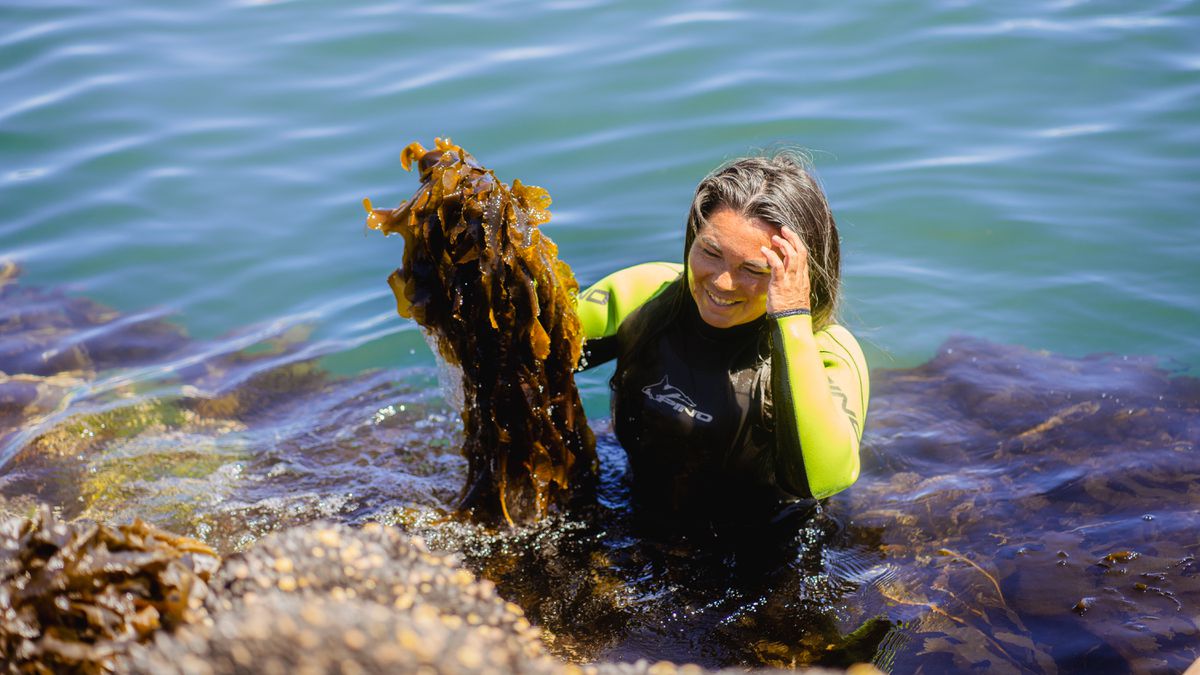Cancún in Mexico is something like the Ballermann in Mallorca. Hordes of festive tourists go on holiday here - often with too much alcohol. But similar to the Mediterranean island, there are paradisiacal areas not far from Cancun's airport. If you like it quiet, you can drive along the coastal roads to the south in more peaceful villages. And if you like it even more quiet, you can choose one of the islands off the coast of the state of Quintana Roo.
For example to Holbox.
The narrow island on the satellite image above is made entirely of sand. In the north, an endless beach draws a white line between sea and land. The water is crystal clear and deep blue - how could it be otherwise. In the far west, the only village is home to tourists, for example, come for diving with whale sharks. Much of the island consists of the Yum-Balam Biosphere Reserve. On the picture above you can see the vegetation, it is colored red.
photo gallery
31 pictures
Satellite image of the week: snapshots from spaceHolbox is pronounced in the Mayan language "Holbosh", it means something like "black hole". The name probably refers to the dark water of a lagoon on the island.
But this summer, a dark threat threatened the island: brown algae. Masses of Sargassum algae were flushed to the beach. Already in the 15th century, Christopher Columbus noticed carpets of this species of algae in the Sargasso Sea. In the sea, the algae form habitats for many marine animals and even bind climate-damaging carbon dioxide.
But when they land on land, they become a problem. They rot and develop a pungent odor. In addition, they attract tons of flies. This displeases tourists, of which the region is heavily dependent. Mexico's government has already spent many millions of dollars to remove more than 500,000 tons of Sargassum from their beaches.
Panthermedia / imago images
Beach on Holbox in Mexico
In recent years, the Sargassum plague has increased worldwide. Therefore, the brown alga is increasingly becoming the focus of research.
To find out how and where the algae carpets are driving, scientists use satellite data as in the picture above. It was recorded on 6 July 2019 and is now published by the European Space Agency Esa.
The inclusion of the "Sentinel-2" satellite from the Copernicus program reveals the impending disaster: the red stripes in the sea off the coast show the brown algae. To make them visible, the researchers use a so-called false-color image. In the process, individual sections of the image from the satellite radar data are colored in color by the Esa researchers. This makes it much easier to identify relevant information such as different vegetation areas. In the picture they are red.
In October, researchers met for the first time on Guadeloupe for the first international Sargassum conference. There, scientists shared their findings and discussed solutions on how coastal communities can deal with the massive increase in algae.
How significant the problem is seen globally, researchers had shown in a study that was published in the summer in the journal "Science". They had investigated the so-called Great Atlantic Sargassum Belt, which drifts in the North Atlantic from West Africa to the Gulf of Mexico. According to researchers, it has been getting bigger and bigger for years. This is due, for example, to fertilizers that reach the oceans via rivers. The Great Atlantic Sargassum Belt has now reached a length of 8850 kilometers. This roughly corresponds to the Great Wall of China.



/cloudfront-eu-central-1.images.arcpublishing.com/prisa/CY2A26MEDVGSFEWPX5DBVG5BFQ.jpg)




